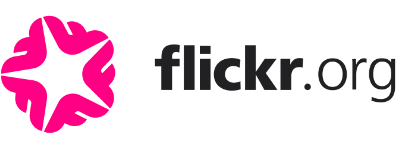Field Notes #01: Lughnasadh
by Fattori McKennaDeep Reading in the Last Days of Summer
I joined the Foundation team in early August, with the long-term goal of better understanding future users of the Data Lifeboat project and Safe Harbor network. Thanks to the Digital Humanities Advancement Grant we were awarded by the National Endowment for the Humanities, my first task was to get up to speed with the Data Lifeboat project, a concept that has been in the works since 2022, as part of Flickr.org’s Content Mobility Program, and recently developed a working prototype. I have the structured independence to design my own research plan and, as every researcher knows, being able to immerse oneself in the topic prior, is a huge advantage. It allows us to frame the problem at hand, to be resolute with objectives and ground the research in what is known and current.
Stakeholder interviews
To understand what would be needed from the research plan, I first wanted to understand how we got to where we are with Data Lifeboat project.
I spoke with Flickr.org’s tight-knit internal team to gather perspectives that emphasised varying approaches to the question of long-term digital preservation: ranging from the technological, to the speculative, to the communal. It was curious to see how different team members viewed the project, each speaking from their own specialty, with their wider ambitions and community in mind.
Branching out, I enlisted external stakeholders for half-hour chats, those who’ve had a hand in the Data Lifeboat project since it was in napkin-scribble format. The tool owes its present form to a cadre of digital preservation experts and enthusiasts, who do not work on the project full-time, but have generously given their hours to partake in workshops, coffees, Whereby calls, and a blissfully meandering Slack thread. Knowing these folks would be, themselves, a huge repository of knowledge, I wanted a way to capture this. Besides introductions to the Safe Harbor Network co-design workshops (as supported by the recent Mellon Foundation grant) and my new role, I centred our conversation around three key questions:
- What has your experience of the last six months of the Data Lifeboat project been like? How do you think we are doing? Any favourite moments, any concerns?
- What are the existing practices around digital acquisition, storage and maintenance in your organisation(s)? How would the Data Lifeboat and Safe Harbor Network differ from the existing practices?
- Where are the blind-spots that still exist for developing the Data Lifeboat project and Safe Harbor Network? What might we want to find out from the co-design workshops in October and November?
Here it was notable to learn what had stuck with them in the repose since the last Data Lifeboat project meet-up. For some the emphasis was on how the Data Lifeboat tool could connect institutions, for others it was how the technology can decentralise power and ownership of data. All were keen to see what shape the project would take next.
One point, however, remained amorphous to all stakeholders that we ought to carry forward into research: what is the problem that Data Lifeboat project is solving? Specifically in a non-emergency scenario (as the emergency need is intuitive). How can we best articulate that problem to our imagined users?
As our prototype user group is likely to be institutional users of Flickr (Galleries, Libraries, Archives and Museums), it will be important to meet them where they are, which brought me onto my next August task: the mini-literature review.
Mini Literature Review
Next, I wanted to get up to date on the contemporary discourses around digital preservation. Whilst stakeholders have brought their understanding of these topics to shaping the Data Lifeboat project, it felt as if the project was missing its own bibliography or set of citations. I wanted to ask, what are the existing conversations that Data Lifeboat project is speaking to?
It goes without saying that this is a huge topic and, despite my humble background in digital heritage research (almost always theoretical), cramming this all into one month would be impossible. Thus, I adopted the ethos of the archival ‘sliver’ that so informs the ethos of the Data Lifeboat project, to take a snapshot of current literature. After reviewing the writing to date on the project (shout-out to Jenn’s reporting here and here), I landed on three guiding topics for the literature review:
The Status of Digital Preservation
- What are the predominant tools and technologies of digital preservation?
- What are recent reflections and learnings from web archiving experiments?
- What are current institutional and corporate strategies to digital social collecting and long-term data storage?
Examples include:
- Preserving Digital Materials by Ross Harvey and Jaye Weatherburn
- The Archived Web: Doing History in the Digital Age by Niels Brügger
- Ten years of the UK web archive: what have we saved? by Andy Jackson
Care & Ethics of Archives
- What are the key ethical considerations among archivists today?
- How are care practices being embedded into archives and archival practice?
- What reflections and responses exist to previous ethical interventions?
Examples include:
- The Archive as a Productive Space of Conflict by Cedric Price
- Documenting the Now: Ethical Considerations for Archiving Social Media Content Generated by Contemporary Social Movements by Bergis Jules et al.
- An Introduction to Radical Empathy in Archival Practice by Elvia Arroyo-Ramírez, Jasmine Jones, Shannon O’Neill, and Holly Smith
Collaboration and Organisation in Archival Practice
- What are the infrastructures (hard and soft) of archival practice?
- What are the predominant organisational structures, considerations and difficulties in digital archives
- How does collaboration appear in archives? Who are the (visible and invisible) stakeholders?
Examples include:
- “Everything on the internet can be saved”: Archive Team, Tumblr and the cultural significance of web archiving’ by Jessica Ogden
- The invention of the archived web: tracing the influence of library frameworks on web archiving infrastructure by Kieran Hegarty
- Maintenance and Care by Shannon Mattern
A selection of academic articles, blog posts and industry guidelines were selected as source materials (as well as crowdsourcing from the Flickr.org team’s favourites). In reading these texts, I had top of mind the questions: ‘What does this mean for the Data Lifeboat project and the Safe Harbor Network’, in more granular terms this means, ‘What can we learn from these investigations?’ ‘Where are we positioned in the wider ecosystem of digital preservation?’ and finally, ‘What should we be thinking about that we aren’t yet?’
Naturally with more time, or with an academic audience in mind, a more rigorous methodology to discourse capture would be appropriate. For our purposes, however, this snapshot approach suffices – ultimately the data this research is grounded in comes not from textual problematising, but instead will emerge from our workshops with future users.
Having this resource is of huge benefit to meeting our session participants where they stand. Whilst there will inevitably be discourses, approaches and critiques I have missed, I will at least be able to speak the same language as our participants and get into the weeds of our problems in a complex, rather than baseline, manner. Furthermore, my ambition is for this bibliography to become an ongoing and open-source asset, expanding as the project develops.
These three headers (1. The Status of Digital Preservation, 2. Care & Ethics of Archives, 3. Collaboration and Organisation in Archival Practice) currently constitute placeholders for our workshop topics. It is likely, however, that these titles could evolve, splinter or coalesce as we come closer to a more refined and targeted series of questions for investigating with our participants.
Question Repository [in the works]
Concurrently to these ongoing workstreams, I am building a repository, or long-list, of questions for our upcoming workshops. The aim is to first go broad, listing all possible questions, in an attempt to capture as many inquisitive voices as possible. These will then be refined down, grouped under thematic headings which will in turn structure the sub-points or provocations for our sessions. This iterative process reflects a ground-up methodology, derived from interviews, reading, and the collective knowledge of the Flickr.org community, to finally land on working session titles for our October and November Safe Harbor Network co-design workshops.
Looking ahead, there is an opportunity to test several of these provocations around Data Lifeboat at our Birds-of-a-Feather session, taking place at this year’s International Conference on Digital Preservation (iPres) in Ghent later this month. Here we might foresee which questions generate lively and engaged discussion; which features of the Data Lifeboat tool and project prompt anticipation or concern; and finally, which pathways we ought to explore further.
Other things I’ve been thinking about this month
Carl Öhman’s concept of the Neo-Natufians in The Afterlife of Data: What Happens to Your Information When you Die and Why You Should Care
Öhman proposes that the digital age has ushered in a major shift in how we interact with our deceased. Referencing the Natufians, the first non-nomadic peoples to keep the dead among their tribe (who would adorn skulls with seashells and place them in the walls) instead of leaving them behind to the elements, he posits our current position is equally as seismic. The dead now live alongside us in the digital realm. A profound shift from the family shoebox of photographs, the dead are accessible from virtually anywhere at any time, their (visible and invisible) data trail co-existing with ours. An inescapable provocation for the Data Lifeboat project to consider.
“The imago mask, printed not in wax but in ones and zeros”
The Shikinen Sengu Ritual at Ise Jingu, Japan
The Shikinen Sengu is a ritual held at the Ise Grand Shrine in Japan every 20 years, where the shrine is completely rebuilt and the sacred objects are transferred to the new structure. This practice has been ongoing for over a millennium and makes me think on the mobility of cultural heritage (analogue or digital) and that stasis, despite its intuitive appeal, can cause objects to perish. I am reminded of the oft-exalted quote from di Lampedusa’s Sicilian epic:
“If we want things to stay as they are, things will have to change.” – The Leopard, by Giuseppe Tomasi di Lampedusa
Furthermore Shikinen Sengu highlights the importance of ritual in sustaining objects, despite the wear-and-tear that handling over millennia may cause. What might our rituals around digital cultural data be, what practices could we generate (even if the original impetus gets lost)?
Background Ephemera
Currently Playing: Laura Misch Sample the Earth and Sample the Sky
Currently Reading: The Hearing Trumpet by Leonora Carrington
Currently Drinking: Clipper Green Tea

